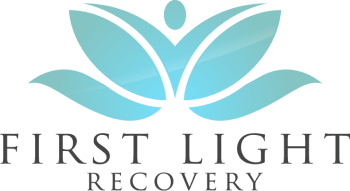Understanding Insurance Coverage
When considering trauma and PTSD treatment covered by insurance, it’s crucial to understand how insurance policies handle mental health coverage. This understanding will help you navigate the options available for you or your loved one.
Mental Health Parity and Addiction Equity Act
The Mental Health Parity and Addiction Equity Act (MHPAEA) mandates that insurance companies provide comparable coverage for mental health disorders, including PTSD, as they would for physical health conditions. This law ensures that your mental health treatment does not have stricter limits than those applied to other medical services.
Under this act, if your health plan covers physical health services such as hospitalization or outpatient treatments, it must also provide similar coverage for mental health services, which includes:
- In-patient treatment
- Outpatient therapy
- Medication management services
- Initial assessments and diagnostic appointments
For more detailed information on this topic, refer to Talkspace.
Coverage Variations by Plan
Coverage for PTSD treatment varies significantly between different insurance plans. While some health insurance providers cover comprehensive treatment options, others may impose tight restrictions. Generally, most health insurance plans include coverage for:
| Coverage Type | Description |
|---|---|
| In-patient treatment | Coverage for residential programs focused on PTSD recovery. |
| Outpatient therapy | Coverage for regular therapy sessions with licensed professionals. |
| Medication management | Coverage for prescribed medications to assist with PTSD symptoms. |
| Initial assessments | Coverage for necessary evaluations to diagnose PTSD. |
It’s important to research your specific insurance plan to determine what treatments and facilities are covered. Some policies may include additional services or specialized programs such as residential PTSD programs in Orange County or PTSD rehab centers in Los Angeles.
Before starting any treatment, confirm your coverage details with your insurance provider. Most insurance plans will help you understand the extent of your coverage for different types of PTSD treatment, thereby ensuring you make well-informed decisions about your care.
Therapy Coverage for PTSD
Understanding therapy coverage for PTSD is crucial for you or your loved one when seeking effective mental health treatment. Therapy plays a vital role in the recovery process and is often included in most insurance plans. However, it’s important to consider the effectiveness of therapy as well as any restrictions that may apply.
Effectiveness of Therapy
Therapy for PTSD has been found incredibly effective in treating the condition. Various therapy options are commonly included in insurance coverage, such as:
- Cognitive Behavioral Therapy (CBT)
- Eye Movement Desensitization and Reprocessing (EMDR)
- Exposure Therapy
Most insurance plans cover these treatments, but it is important to verify the specifics of your policy and what is included. The Mental Health Parity and Addiction Equity Act mandates that health plans must provide equal coverage for mental health conditions as they do for physical health, making it likely that your insurance will cover therapy for PTSD.
In high-income countries, therapy coverage rates are generally higher. For instance, adequate psychotherapy coverage was reported at 21.3% compared to just 4.5% in low- and middle-income countries [3]. If you are in a high-income area, you may find more extensive therapy options available to you.
Therapy Restrictions and Limits
While therapy for PTSD is often covered, many insurance plans may have restrictions and limits. This can include:
- An annual maximum on the number of therapy sessions.
- Requirements for prior authorization for certain types of therapy.
- Limitations based on the severity of symptoms; those with more severe symptoms are generally more likely to receive effective treatment coverage [3].
It is essential to review your specific plan to understand what restrictions may apply. Contact your insurance provider to get detailed information regarding the limitations of therapy coverage under your policy. This ensures that you can access the necessary services without unexpected costs.
By being informed about the effectiveness of therapy and understanding the potential limitations of your insurance coverage, you can make better decisions for your mental health journey. If you’re considering treatment options and assessing coverage for trauma and PTSD treatment, ensure to consult with both your healthcare provider and insurance carrier for the most accurate guidance. For more information on therapy options, consider exploring our resources on residential mental health for trauma.
Medication Coverage for PTSD
Role of Medication in Treatment
When addressing PTSD, medication often plays a vital role in the treatment process. Antidepressants, particularly selective serotonin reuptake inhibitors (SSRIs), are frequently prescribed to help manage symptoms such as anxiety and depression. According to CEREVITY, medications tailored for PTSD can significantly improve daily functioning and overall well-being.
While medication can be an important part of your treatment plan, it’s essential to have a comprehensive approach that may include therapy options like cognitive behavioral therapy (CBT) and exposure therapy. Many insurance plans cover a portion of these therapies, but limits may exist on the number of sessions.
Here’s a brief summary of medication types commonly used in PTSD treatment:
| Medication Type | Purpose |
|---|---|
| SSRIs | Manage anxiety and depression symptoms |
| Benzodiazepines | Provide short-term relief from anxiety |
| Prazosin | Reduce nightmares related to PTSD |
Verifying Medication Coverage
Before starting any prescribed medications for PTSD, it’s crucial to verify insurance coverage for those medications. Most insurance plans cover at least part of the cost associated with medications identified for treating PTSD [2]. However, specific coverage can vary significantly between plans.
To ensure a smoother experience with your treatment, follow these steps:
- Contact Your Insurance Provider: Reach out to your insurance company directly to ask about medication coverage for PTSD. Make sure to inquire about:
- Prescription coverage limitations
- Co-pays or deductibles for prescribed medications
- The list of covered medications
- Check the Formularies: Every insurance plan maintains a formulary, which is a list of medications that are covered. Verify that the prescribed medications fall within this list.
- Documentation from Healthcare Providers: Your healthcare provider may need to provide documentation to support the medical necessity of your prescribed medications for your insurance to approve coverage.
- Consider Medicare or Medicaid: If you’re eligible, these programs may also cover PTSD treatment claims, providing another potential route for accessing medications.
Understanding your medication coverage is a significant step towards getting effective treatment for PTSD. For more information about insurance-covered treatment options, check out our resources on insurance covered depression treatment riverside and residential mental health for trauma anaheim.
In-Patient Treatment Coverage
Navigating in-patient treatment coverage for trauma and PTSD can be a critical step in recovery. Understanding the specifics of how your insurance handles in-patient care is essential for making informed decisions.
Importance of In-Patient Care
In-patient treatment provides a structured environment where individuals can focus solely on their recovery without the distractions of daily life. This level of care is particularly beneficial for managing severe trauma and PTSD symptoms, as it often includes a combination of intensive therapy, medication management, and 24/7 support from professionals.
Research indicates that only 43.0% of individuals with 12-month PTSD received any mental health services, highlighting the need for more effective treatment access. Having insurance increases the likelihood of receiving adequate treatment, making it imperative to check your coverage options.
Checking Coverage Details
Before committing to in-patient treatment, you should thoroughly review your insurance plan to understand what is covered. Certain types of insurance plans cover in-patient treatment for PTSD, but variations exist that can affect your access to services [2].
Here’s a summary of key elements to verify when checking your insurance coverage:
| Coverage Element | Details to Check |
|---|---|
| In-Patient Treatment | Is it fully covered or just partially? |
| Duration of Stay | How many days/hours of treatment are covered? |
| Treatment Facilities | Are there specific facilities your plan requires? |
| Co-pays and Deductibles | What costs will you be responsible for? |
| Pre-Authorization Requirements | Is prior approval necessary before treatment begins? |
It is advisable to contact your insurance provider directly to clarify any details related to your specific plan. Understand your rights under the Mental Health Parity and Addiction Equity Act—this legislation requires that mental health services be covered comparably to medical services, which can be beneficial when advocating for necessary care.
Choosing an in-patient program that specializes in trauma and PTSD not only enhances the quality of treatment but also increases the chances of recovery aligned with your insurance benefits. For further insights on treatment options, explore the resources available for residential mental health for trauma or residential PTSD programs.
Comparison of Coverage Across Plans
Understanding the various types of insurance plans and how they relate to trauma and PTSD treatment covered by insurance is essential for making informed decisions regarding care options.
Types of Insurance Plans
Health insurance plans vary widely in the coverage they provide for mental health treatment, including PTSD. Here are some common types of insurance plans and their general characteristics:
| Insurance Plan Type | Coverage for PTSD Treatment |
|---|---|
| Health Maintenance Organization (HMO) | Requires a primary care physician and referrals for specialists. Coverage typically includes therapy and possibly inpatient care. |
| Preferred Provider Organization (PPO) | Offers more flexibility in choosing healthcare providers. Coverage is often broader and includes a wider range of therapies and treatments. |
| Exclusive Provider Organization (EPO) | Similar to PPOs but does not cover any out-of-network care. Typically includes outpatient therapy and inpatient options. |
| Point of Service (POS) | Combines features of HMO and PPO. Requires a primary care physician but allows for out-of-network care at a higher cost. |
| Medicare/Medicaid | Government programs that provide coverage for mental health services, including PTSD treatment, based on specific eligibility criteria. |
Certain types of insurance plans may cover inpatient treatment for PTSD, but this coverage can vary significantly. It’s wise to review your specific policy to understand what is included and excluded [2].
Researching Available Treatments
Research is vital for determining the treatments that your insurance plan covers for PTSD. Insurance companies, such as Aetna, Blue Cross Blue Shield, and Cigna, generally cover a range of services related to PTSD, including:
- Inpatient or residential treatment: Coverage for stay in specialized facilities offering comprehensive mental health services.
- Outpatient therapy: Individual or group counseling that may be conducted by licensed professionals.
- Psychiatric care: Medical management provided by psychiatrists for medication-related needs.
- Medication management services: Coverage for prescription medications used in treating PTSD symptoms [1].
When researching available treatments, confirm the specific facilities and programs your plan covers. Additionally, knowing the details outlined by the Mental Health Parity and Addiction Equity Act can ensure you are receiving the benefits your policy guarantees, highlighting that mental health coverage should be equal to physical health coverage [2].
Taking these steps will help you or your loved ones navigate the complexities of insurance coverage regarding trauma and PTSD treatment. For further assistance with residential mental health for trauma, including various facilities that accept insurance, visit our dedicated resources.
Additional Resources for Treatment
Military Coverage for PTSD
If you or a loved one is a military member or veteran seeking treatment for PTSD, it’s crucial to understand the specifics of your coverage. PTSD insurance coverage for military personnel varies widely, so it is advisable to verify your benefits with your insurance provider. Active duty members and veterans may have access to unique resources, including counseling and support groups provided by their service branch or Veterans Affairs (VA) [2].
| Coverage Type | Description |
|---|---|
| VA Health Benefits | Offers comprehensive coverage for mental health services, including PTSD treatment. |
| TRICARE | Provides healthcare for military personnel, retirees, and their dependents. Coverage varies by plan. |
| Medicare/Medicaid | May include coverage for PTSD treatment claims. |
Understanding your military benefits can open up additional avenues for receiving quality mental health care, ensuring that professional support is accessible and tailored to your needs.
Accessing Additional Support
Beyond insurance coverage, various resources can enhance your treatment experience for trauma and PTSD. You can benefit from additional support options that may not be directly covered by insurance. Consider exploring:
- Counseling Services: Many organizations offer free or low-cost counseling services, particularly for veterans and active-duty military personnel.
- Support Groups: Joining a support group can provide community and connection with others facing similar challenges. Local chapters often organize meetings that foster understanding and shared experiences.
- Hotlines: Numerous hotlines provide immediate advice and support for individuals in crisis. Organizations like the National Suicide Prevention Lifeline offer around-the-clock assistance.
Taking the time to investigate these options ensures that you or your loved ones have a comprehensive support system. This can make a significant difference in the treatment journey for PTSD.
For a deeper understanding and more options, it’s beneficial to reach out to facilities that specifically focus on residential mental health for trauma or to those that conduct intensive trauma recovery. Always confirm that the treatments align with your insurance plan to maximize coverage.
References
- (AMFM Treatment)
- (Talkspace)
- (PMC)




